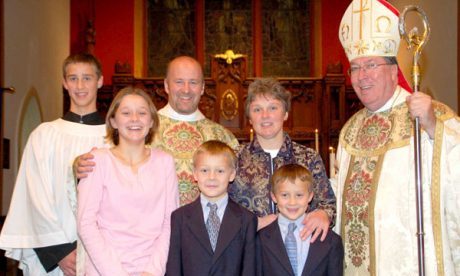In 1970, there was one priest for every 800 Catholics in the United States.
Today, that number has more than doubled, with one priest for every 1,800 Catholics.
Globally, the situation is worse. The number of Catholics per priest increased from 1,895 in 1980 to 3,126 in 2012, according to a report from CARA at Georgetown University.
The Catholic Church in many parts of the world is experiencing what is being called a “priest shortage” or a “priest crisis.”
Earlier this year, Pope Francis answered a question about the priest shortage in a March 8 interview published in the German weekly Die Zeit.
The part that made headlines, of course, was that about married priests.
“Pope Francis open to allowing married priests in Catholic Church,” read a USA Today headline.
“Pope signals he’s open to married Catholic men becoming priests,” said CNN.
But things are not as they might seem. Read a little deeper, and Pope Francis did not say that Fr. John Smith at the parish down the street can now ditch celibacy and go looking for a wife.
What the Holy Father did say is that he is open to exploring the possibility of proven men (‘viri probati,’ in Latin) who are married being ordained to the priesthood.
Currently, such men, who are typically over the age of 35, are eligible for ordination to the permanent diaconate, but not the priesthood.
However, marriage was not the first solution to the priest shortage Pope Francis proposed. In fact, it was the last.
Initially, he didn’t even mention marriage.
Pressed specifically about the married priesthood, the Pope said: “optional celibacy is discussed, above all where priests are needed. But optional celibacy is not the solution.”
While Pope Francis perhaps signals an iota more of openness to the possibility of married priests in particular situations, his hesitance to open wide the doors to a widespread married priesthood is in line with his recent predecessors, St. John Paul II and Benedict XVI, as well as the longstanding tradition of the Roman Catholic Church. Continue reading
Sources
- Catholic News Agency article by Mary Rezac, a staff writer for Catholic News Agency/EWTN News.
- Image: Crux
